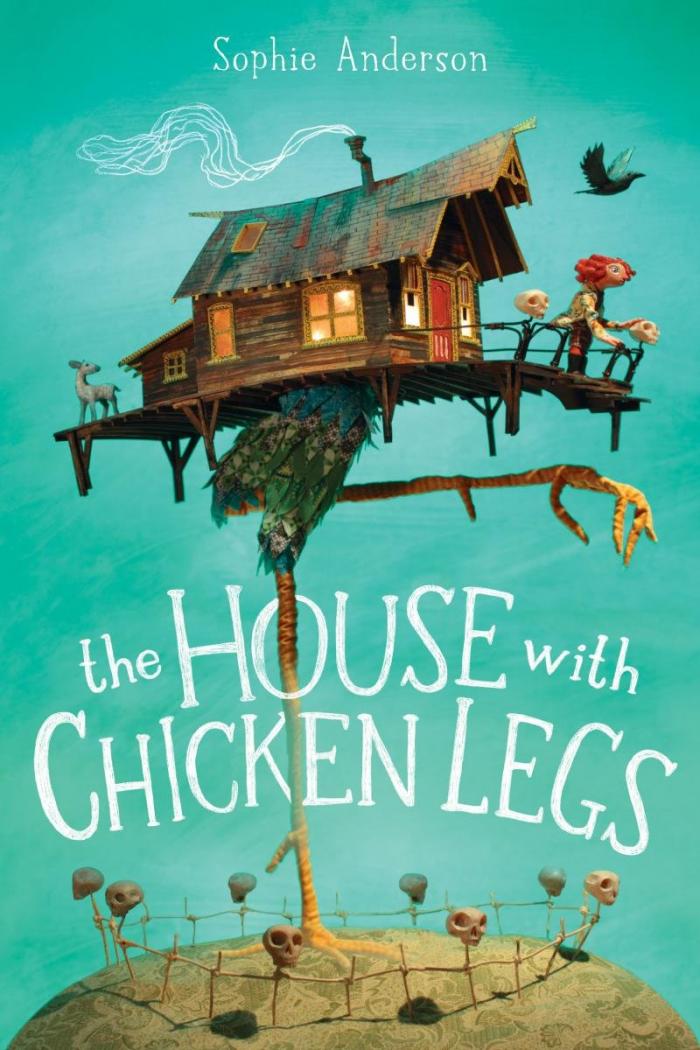The House with Chicken Legs by Sophie Anderson
FTC Statement: Reviewers are frequently provided by the publisher/production company with a copy of the material being reviewed.The opinions published are solely those of the respective reviewers and may not reflect the opinions of CriticalBlast.com or its management.
As an Amazon Associate, we earn from qualifying purchases. (This is a legal requirement, as apparently some sites advertise for Amazon for free. Yes, that's sarcasm.)

Marinka is twelve-years-old and lives with her Baba, or grandmother, and her pet bird, a jackdaw named Jack. Marinka’s grandmother is a Yaga, a Guardian who guides dead people through “The Gate” so they can return to the stars and complete the cycle. Marinka never meets people who are alive, as they must keep their distance from the living, but she yearns for a real friend and a normal life with the living.
The most unusual and amazing thing about Marinka’s life is her house. Her house is the home to The Gate; it cares for, comforts, and protects Marinka; and moves on chicken legs at will.
At one location, Marinka can see a town, little villages, and a lake off in the distance. She imagines and daydreams what it would be like to live there among them. One day outside her house, a living boy named Benjamin stops to visit with a baby lamb. Benjamin and Marinka quickly bond, and he leaves Marinka with the lamb. Benjamin and Marinka go for a walk to a cave in the side of a mountain, while Baba and the house sleep, but Marinka makes sure she gets back home before Baba or the house wake up. Unfortunately, the house moves that night to their next destination leaving her new friend, Benjamin, behind. Marinka is devastated!
Marinka knows it is her destiny to become the next Yaga, but it is the last thing she wants. One night, after the guiding, Marinka finds a young girl, Nina, who does not want to leave. Marinka decides to hide Nina in her bedroom and keep her as a friend, and a secret from Baba Yaga. Later, Marinka learns from Baba Yaga that if souls do not complete their journey, they become lost forever. Nina and Marinka play together, and Marinka gets the house to take them all to the ocean for Nina to see. After Nina sees the ocean, Marinka promises the house that she will guide Nina through The Gate herself. They get to the ocean and Nina and Marinka swim and have a wonderful time, until Marinka realizes something is very wrong. They both get back to the house, but Nina has become very weak, and Baba Yaga must now help Nina through The Gate and return her to the stars herself. Baba Yaga must leave Marinka forever, and Marinka must become Yaga immediately.
The story unfolds as Marinka tries to survive without Baba Yaga. Marinka still desires a normal life with the living and fights her destiny at every turn. This story is full of life lessons, like choosing your friends wisely, the importance of telling the truth, the sacrifices one makes for someone they love, and learning to appreciate the sweet moments in life.
I truly enjoyed this novel. It would be a great addition to a History or Social Studies lesson involving Russia, or a diversity lesson where you could research the Russian culture and even make some of the dishes. In speaking with my neighbors from Russia, they explained some of the book to me. They confirmed this story holds true to the Russia folklore using authentic names, meal items (which they described and helped me pronounce), and the descriptions of locations. It made the book come more alive for me. They said this folktale is told to young children, but it is normally scary like our Wicked Witch in Snow White. However, told from the Yaga’s point of view, this story is not scary at all, but very educational and enjoyable! As in all folklore, it is important to keep these stories alive.


